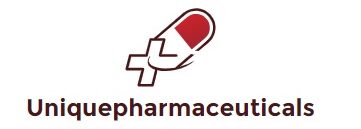If you feel a swelling in your breast, you need to constantly get it examined by a GP. Most breast lumps are safe, however some can be major.
Non- immediate suggestions: See a GP if you see:
- a swelling in your breast or underarm
- any other uncommon modifications in your breasts– such as the nipple turning inwards, dimpled skin or bloodstained nipple discharge
Changes in the breasts can be an indication of breast cancer. This is simpler to deal with if it’s discovered early.
It’s still crucial to get assist from a GP if you require it. To call your GP surgical treatment:
- visit their site
- utilize the your local doctor App
- call them
What occurs at your GP visit
- The GP will take a look at and analyze your breasts.
- If they’re not exactly sure what’s triggering the swelling, they’ll refer you to a health center or breast center for additional tests.
- These tests typically reveal that a swelling is not cancer.
What occurs at the breast center
At the healthcare facility or breast center, you might have a:
- breast evaluation
- scan– typically a breast X-ray (mammogram) or ultrasound
- biopsy — where a needle is placed into the swelling to get rid of some cells for screening
These tests are frequently done throughout the very same check out. You’ll typically be informed the outcomes on the very same day, although biopsy outcomes take longer– you might need to wait about a week.
Treatment for a breast swelling depends upon the cause. Most are safe and might disappear by themselves without treatment.
Causes of breast lumps
Lumps in the breasts can have great deals of various causes.
They’re frequently brought on by something safe like a non-cancerous tissue development (fibroadenoma) or an accumulation of fluid (breast cyst). Sometimes, a breast swelling can be an indication of something major like breast cancer.
Do not self-diagnose
Do not attempt to self-diagnose the reason for your swelling– constantly see a GP.
Breast Pain
There are lots of factors breasts can be agonizing. Breast pain by itself is not likely to be a sign of cancer.
Breast pain is typically connected to durations
Symptoms of breast pain brought on by durations:
- dull, heavy or hurting pain– from moderate to really bad
- pain that starts as much as 2 weeks prior to a duration, worsens and then disappears when the duration ends
- typically (however not constantly) impacts both breasts and often pain infects the underarm
How to alleviate the pain yourself
Do
- take paracetamol or ibuprofen, or rub painkilling gel on your breasts
- use a correctly fitted bra throughout the day and a soft bra to oversleep
There’s little proof that vitamin E tablets or night primrose oil assist with breast pain.
Breast pain not connected to durations
Sometimes breast pain is brought on by:
- injuries or sprains to the neck, shoulder or back– these can likewise be felt as breast pain
- medications like the birth control pill and some antidepressants– inspect the adverse effects in the package’s details brochure
- conditions like mastitis or a breast abscess — these can trigger breast pain together with other signs
- pregnancy– breast pain can be an early indication
Breast pain and the menopause
Hormone modifications throughout the menopause can trigger breast pain. Once the menopause is over (you have actually had 12 months without a duration), the pain must not return.
Non- immediate suggestions: See a GP about breast pain if:
- it’s not enhancing or pain relievers are not assisting
- you have a really heat or feel hot and shivery
- any part of your breast is red, hot or inflamed
- there’s a history of breast cancer in your household
- you have any indications of pregnancy– you might do a pregnancy test initially
It’s still crucial to get assist from a GP if you require it. To call your GP surgical treatment:
- visit their site
- utilize the your local doctor App
- call them
Urgent suggestions: Ask for an immediate GP visit or call 111 if:
- there’s a difficult swelling in your breast that does stagnate around
- you get nipple discharge, which might be spotted with blood
- one or both breasts alter shape
- the skin on your breast is dimpled (like orange peel)
- you have a rash on or around your nipple, or the nipple has actually sunk into your breast
These can be indications of something more major.

